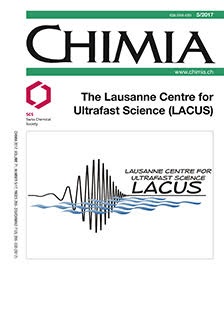Opportunities for Chemistry at the SwissFEL X-ray Free Electron Laser
DOI:
https://doi.org/10.2533/chimia.2017.299Keywords:
Swissfel, X-ray free electron laserAbstract
X-ray techniques have long been applied to chemical research, ranging from powder diffraction tools to analyse material structure to X-ray fluorescence measurements for sample composition. The development of high-brightness, accelerator-based X-ray sources has allowed chemists to use similar techniques but on more demanding samples and using more photon-hungry methods. X-ray Free Electron Lasers (XFELs) are the latest in the development of these large-scale user facilities, opening up new avenues of research and the possibility of more advanced applications for a range of research. The SwissFEL XFEL project at the Paul Scherrer Institute will begin user operation in the hard X-ray (2.1–12.4 keV) photon energy range in 2018 with soft X-ray (240–1930 eV) user operation to follow and here we will present the details of this project, it's operating capabilities, and some aspects of the experimental stations that will be particularly attractive for chemistry research. SwissFEL is a revolutionary new machine that will complement and extend the time-resolved chemistry efforts in the Swiss research community.Downloads
Published
2017-05-31
Issue
Section
Scientific Articles
License
Copyright (c) 2017 Swiss Chemical Society

This work is licensed under a Creative Commons Attribution-NonCommercial 4.0 International License.
How to Cite
[1]
C. J. Milne, P. Radi, B. Pedrini, H. Lemke, G. Knopp, P. Juranic, G. Ingold, C. P. Hauri, U. Flechsig, R. Follath, C. Erny, Y. Deng, P. Beaud, L. Patthey, Chimia 2017, 71, 299, DOI: 10.2533/chimia.2017.299.







